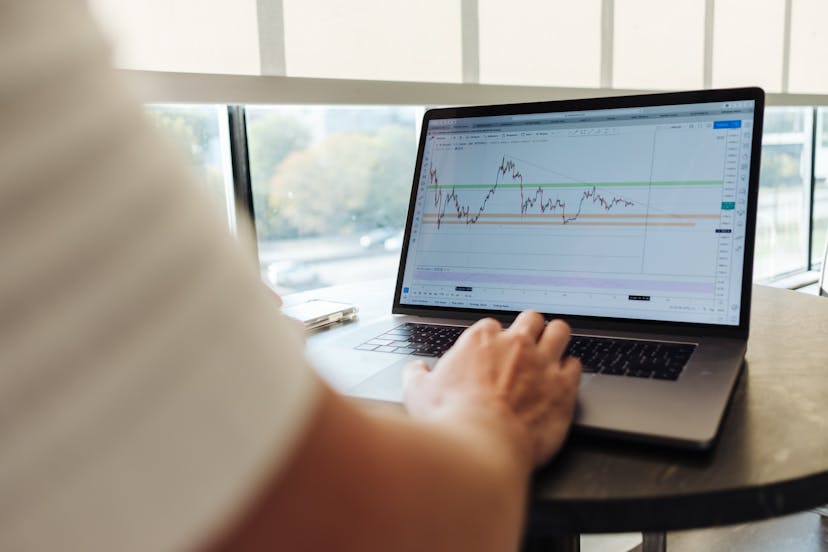Are you looking to optimize your trading strategies and increase your chances of success in the financial markets? Backtesting can be a valuable tool in your arsenal. By simulating the performance of your trading strategies using historical data, you can gain insights into their effectiveness and make informed decisions. In this article, we will provide a step-by-step guide on how to backtest trading strategies effectively.
Table of Contents
- Introduction
- Understanding Backtesting
- Setting Up the Backtesting Environment
- Defining Your Trading Strategy
- Gathering Historical Data
- Implementing the Backtesting Process
- Analyzing Backtest Results
- Fine-tuning and Optimizing Your Strategy
- Avoiding Common Pitfalls
- The Benefits of Backtesting
- Conclusion
- Frequently Asked Questions (FAQs)
1. Introduction
Backtesting is the process of evaluating a trading strategy using historical data to assess its performance. It allows traders and investors to test their strategies on past market conditions to gauge their effectiveness before risking real capital. By simulating trades and measuring the results, you can identify potential flaws and make necessary adjustments to improve your strategy’s performance.
2. Understanding Backtesting
Backtesting involves recreating trades that would have occurred in the past based on a set of predefined rules and parameters. It requires historical data for the chosen financial instruments and a platform or software that can execute the trades. The process aims to answer the question, “Would my strategy have worked in the past?”
3. Setting Up the Backtesting Environment
To begin backtesting, you need to set up a suitable environment. This includes selecting a reliable backtesting platform or software that supports your preferred trading instruments and strategies. Ensure that the platform provides accurate and comprehensive historical data, as well as realistic transaction costs and slippage.
4. Defining Your Trading Strategy
Before diving into backtesting, it is crucial to have a clear and well-defined trading strategy. Determine the entry and exit conditions, position sizing rules, risk management parameters, and any other relevant factors that influence your trading decisions. Document your strategy in detail to ensure consistency during the backtesting process.
5. Gathering Historical Data
Accurate historical data is essential for reliable backtesting results. Obtain data for the desired time period and the financial instruments you intend to trade. This data should include price, volume, and other relevant variables. Ensure the data quality is high and free from any errors or gaps that could skew the results.
6. Implementing the Backtesting Process
Once you have your backtesting environment set up and the necessary historical data, you can begin implementing the backtesting process. Feed the historical data into your chosen platform or software and execute your trading strategy on the past market conditions. The platform should record and calculate the performance metrics of each trade.
7. Analyzing Backtest Results
After completing the backtesting process, it’s time to analyze the results. Assess the performance metrics of your strategy, such as profitability, drawdowns, risk-adjusted returns, and other relevant statistics. Identify strengths and weaknesses, and compare the strategy’s performance against relevant benchmarks or alternative strategies.
8. Fine-tuning and Optimizing Your Strategy
Based on the insights gained from the backtest results, you can fine-tune and optimize your trading strategy. Make adjustments to the parameters, rules, or indicators used in your strategy to enhance its performance. However, be cautious of over-optimization, as it may lead to curve-fitting and poor performance in real-time trading.
9. Avoiding Common Pitfalls
When backtesting trading strategies, it’s important to be aware of common pitfalls. Avoid survivorship bias by including delisted stocks or assets in your dataset. Take into account transaction costs and slippage to simulate realistic trading conditions. Be mindful of data snooping bias by refraining from excessive trial and error adjustments based on historical data.
10. The Benefits of Backtesting
Backtesting offers several benefits for traders and investors. It provides an opportunity to validate and refine trading strategies without risking real capital. It helps in understanding the strengths and weaknesses of a strategy and provides a realistic expectation of its performance. Backtesting also allows for the optimization of risk management techniques and the identification of potential pitfalls.
Conclusion
Backtesting trading strategies is a valuable process that can significantly improve your trading outcomes. By simulating past market conditions and evaluating the performance of your strategies, you can make informed decisions and enhance your chances of success. Remember to approach backtesting with a systematic and disciplined mindset, avoiding common pitfalls, and continuously refining your strategies.
Frequently Asked Questions (FAQs)
Q1: What is the purpose of backtesting? Backtesting allows traders to evaluate the performance of their trading strategies using historical data. Its purpose is to gain insights into the effectiveness of a strategy and make informed decisions.
Q2: How can I gather accurate historical data for backtesting? You can obtain historical data from various sources, including financial data providers, online platforms, or by utilizing specialized backtesting software.
Q3: What are some common mistakes to avoid during backtesting? Some common mistakes to avoid include survivorship bias, neglecting transaction costs and slippage, and data snooping bias through excessive trial and error adjustments.
Q4: Can backtesting guarantee trading success? While backtesting can provide valuable insights, it cannot guarantee trading success. Real-time market conditions may differ from historical data, and other factors such as market volatility and unexpected events can impact trading outcomes.
Q5: How often should I backtest my trading strategies? It is recommended to regularly review and backtest your trading strategies, especially when significant market conditions or changes occur. This helps ensure your strategies remain effective and aligned with current market dynamics.
In this comprehensive guide, we have covered the process of backtesting trading strategies from start to finish. By following the outlined steps and considering the associated tips and pitfalls, you can enhance your trading decision-making and increase your chances of success in the financial markets. Remember to approach backtesting with a disciplined and systematic mindset, continuously refining your strategies based on the insights gained.
Now, it’s time to take action and apply the knowledge gained to optimize your trading strategies. Get started on your backtesting journey and unlock your potential in the world of trading!



